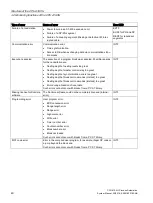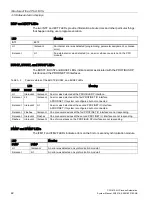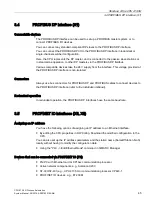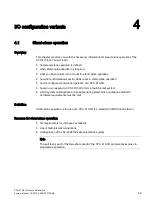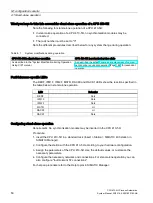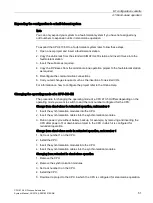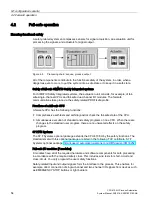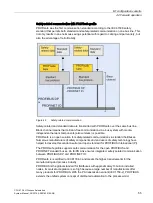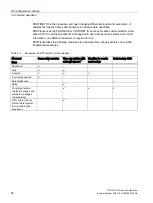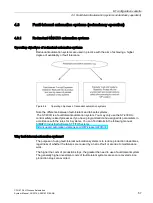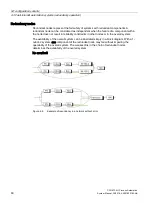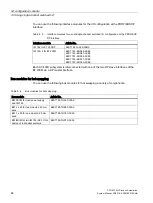
I/O configuration variants
4.1 Stand-alone operation
CPU 410-5H Process Automation
System Manual, 09/2014, A5E31622160-AB
51
Expanding the configuration to a fault-tolerant system
Note
You can only expand your system to a fault-tolerant system if you have not assigned any
odd numbers to expansion units in stand-alone operation.
To expand the CPU 410-5H to a fault-tolerant system later, follow these steps:
1.
Open a new project and insert a fault-tolerant station.
2.
Copy the entire rack from the standard SIMATIC-400 station and insert it twice into the
fault-tolerant station.
3.
Insert the subnets as required.
4.
Copy the DP slaves from the old stand-alone operation project to the fault-tolerant station
as required.
5.
Reconfigure the communication connections.
6.
Carry out all changes required, such as the insertion of one-sided I/Os.
For information on how to configure the project refer to the Online Help.
Changing the operating mode of a CPU 410-5H
The procedure for changing the operating mode of a CPU 410-5H differs depending on the
operating mode you want to switch to and the rack number configured for the CPU:
Change from stand-alone to redundant operation, rack number 0
1.
Insert the synchronization modules into the CPU.
2.
Insert the synchronization cables into the synchronization modules.
3.
Run an power cycle without battery backup, for example, by removing and inserting the
CPU after power off, or download a project to the CPU in which it is configured for
redundant operation.
Change from stand-alone mode to redundant operation, rack number 1
1.
Set rack number 1 on the CPU.
2.
Install the CPU.
3.
Insert the synchronization modules into the CPU.
4.
Insert the synchronization cables into the synchronization modules.
Changing from redundant to stand-alone operation
1.
Remove the CPU.
2.
Remove the synchronization modules
3.
Set rack number 0 on the CPU.
4.
Install the CPU.
5.
Download a project to the CPU in which the CPU is configured for stand-alone operation.




